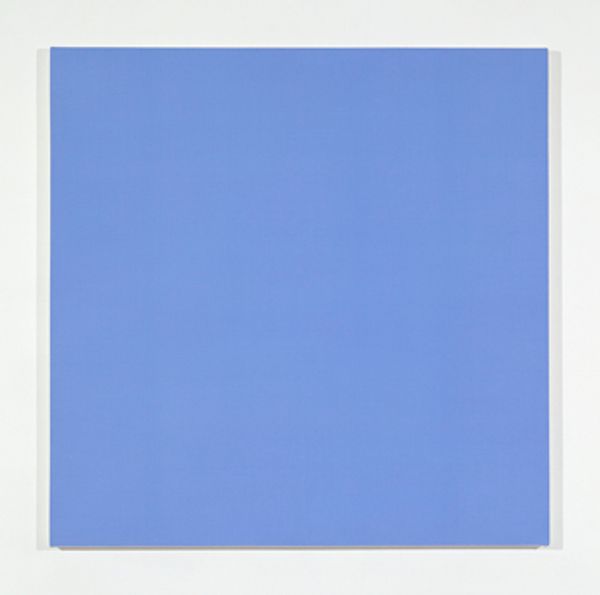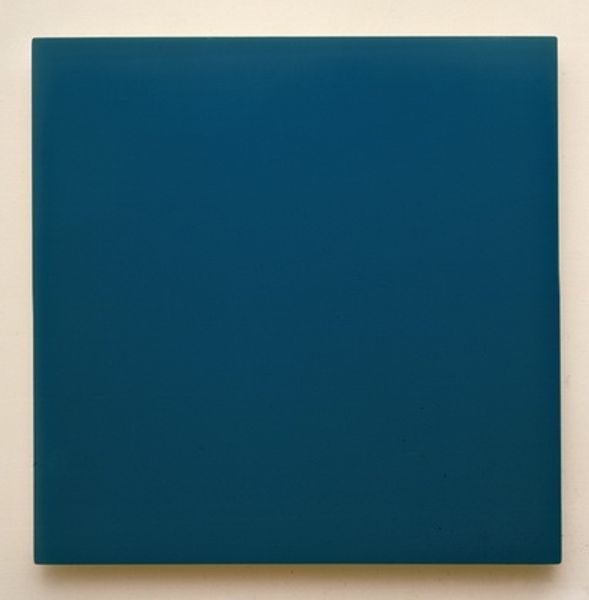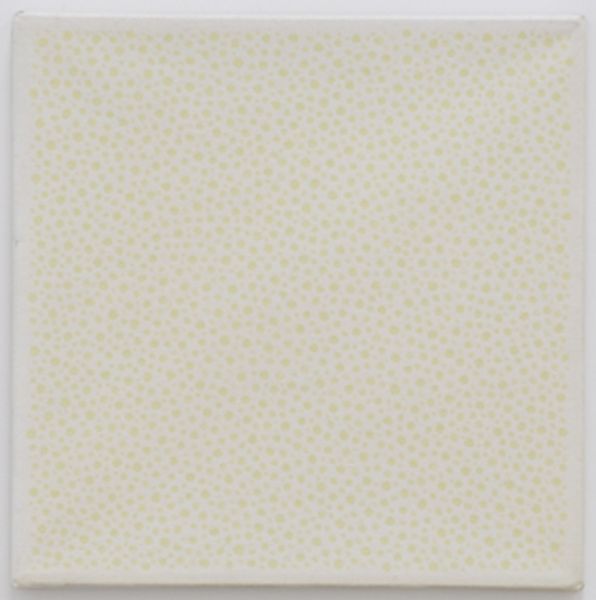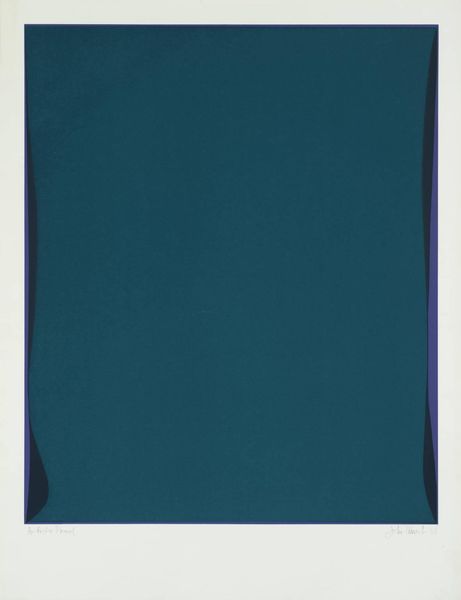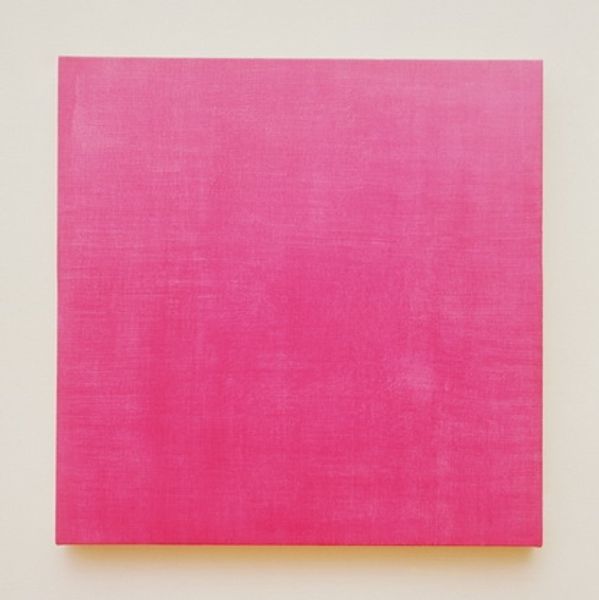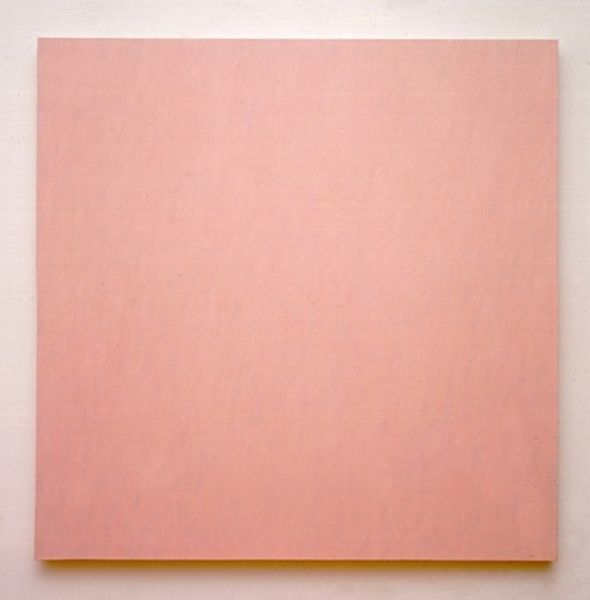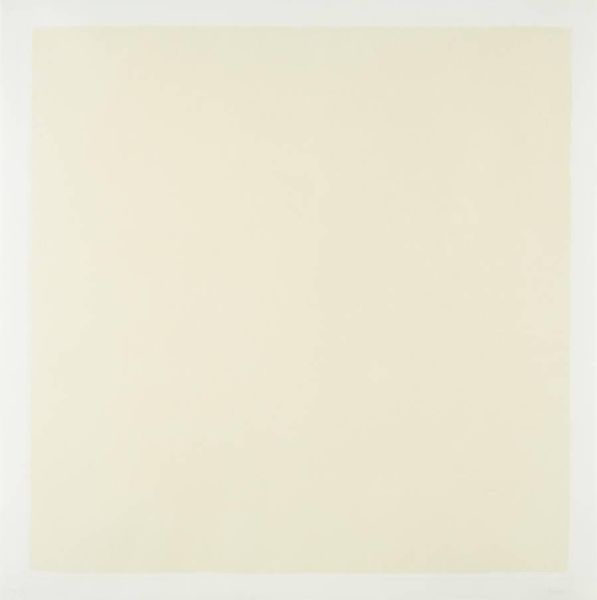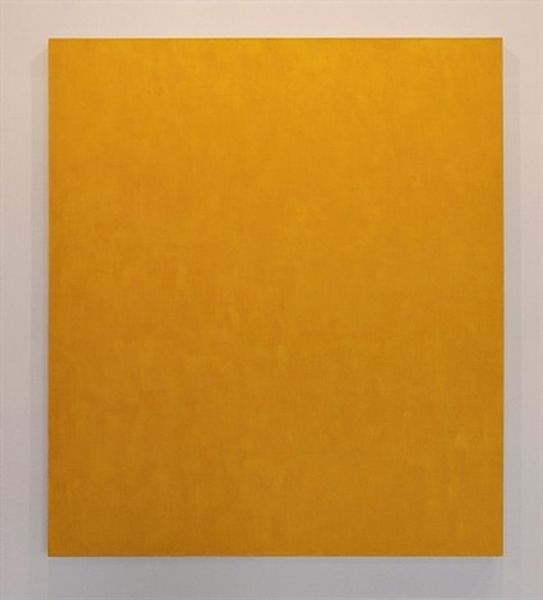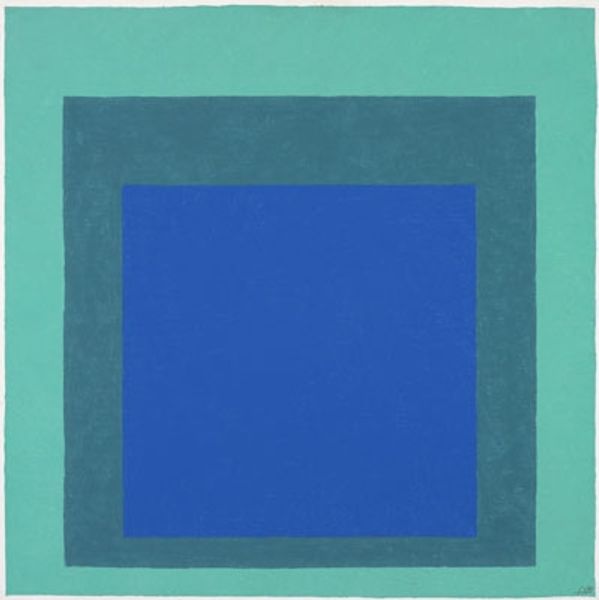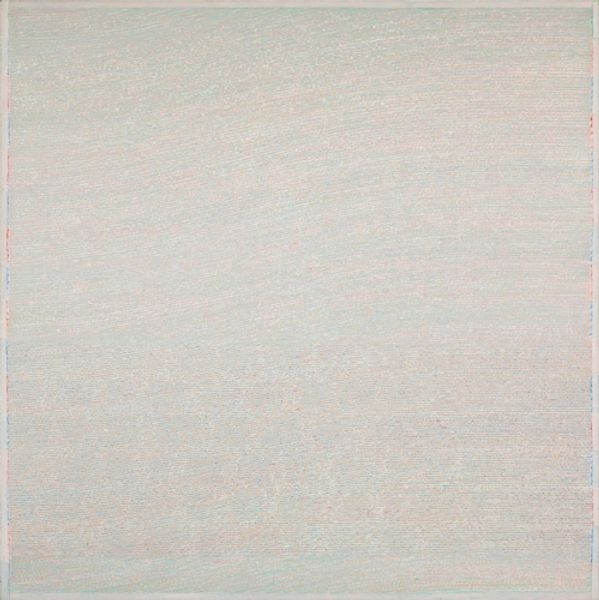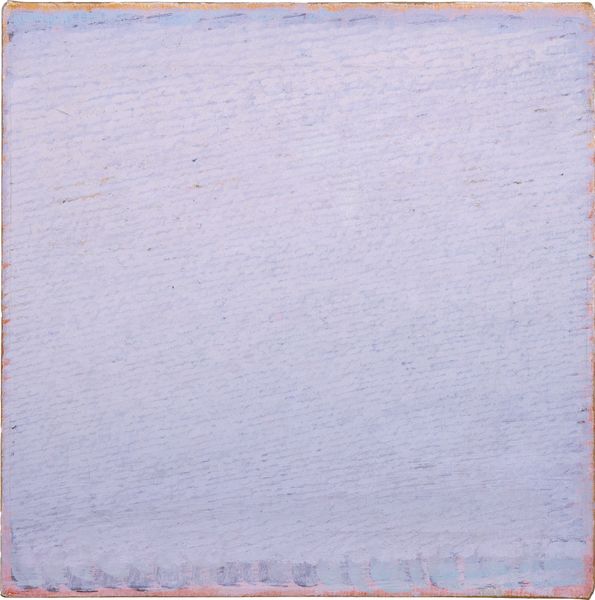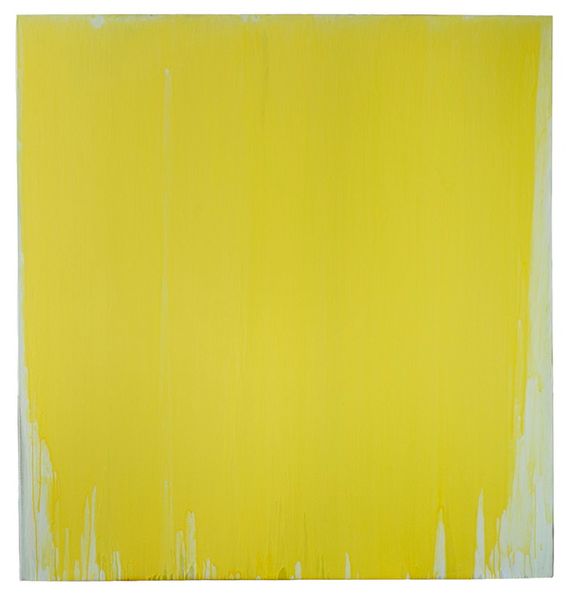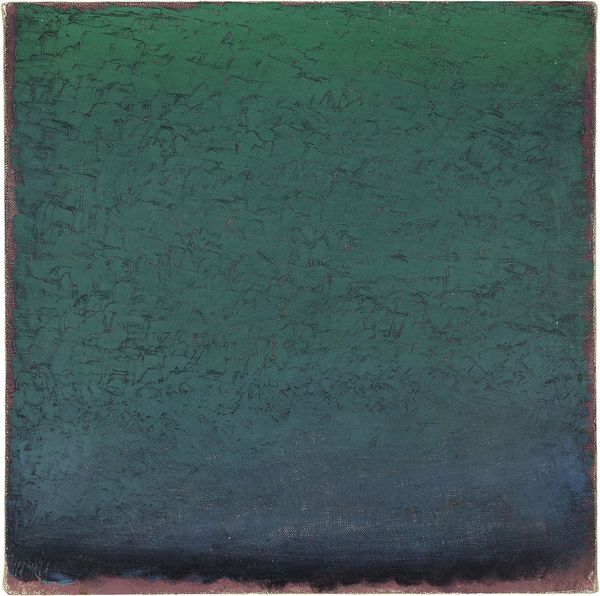
paper
#
tropical
#
print print-like
#
natural substance
#
paper texture
#
paper
#
printed format
#
book mockup
#
publication mockup
#
artificial colours
#
printing proof
#
foil embossing
#
monochrome
Copyright: Phil Sims,Fair Use
Curator: Let's turn our attention to this Untitled piece by Phil Sims, created in 1985. It's a work entirely on paper. Editor: My first impression is the color. A kind of muted, almost pastel, green. It has this expansive calmness about it, filling the square entirely. It's very soothing. Curator: It's intriguing how a simple monochromatic plane can provoke such a reaction. I think the historical context is important here. Sims worked at a time when Minimalism was still casting a long shadow. This piece shows how artists wrestled with its legacy, questioning ideas of authenticity in the art market and democratizing access to minimalist art through readily available materials. Editor: And yet, it isn't perfectly uniform, is it? There are slight variations in tone across the surface. This keeps it visually active despite its monochrome character. I feel those variations introduce texture and depth and prevent it from becoming just a flat field of color. It asks you to really see it. Curator: Absolutely. The decision to use paper, as opposed to traditional canvas, might also reflect his interest in challenging artistic norms. By selecting humble, everyday material, he avoids any notions of grandeur associated with classical painting traditions. This work enters dialogues around the perceived importance of fine art by being, decidedly, the opposite. Editor: I wonder if the choice of this specific green was intentional as well. This evokes natural tones, a springlike or herbal feel and thus, there is something quite calming. Despite its manufactured, even artificial, feel to it. This green gives it that suggestion of growth, life, against the flat plane of its medium. Curator: Interesting. This reading certainly opens it up. Looking at this, knowing when it was made, reminds me how artists like Sims contributed to redefining painting's possibilities during the late 20th century, challenging and enriching the conversation around what constitutes 'art'. Editor: Indeed, it demonstrates how an artist can generate such subtlety and elicit meaning from something as minimal as a colored square. Simplicity isn’t simple; here is the proof.
Comments
No comments
Be the first to comment and join the conversation on the ultimate creative platform.
